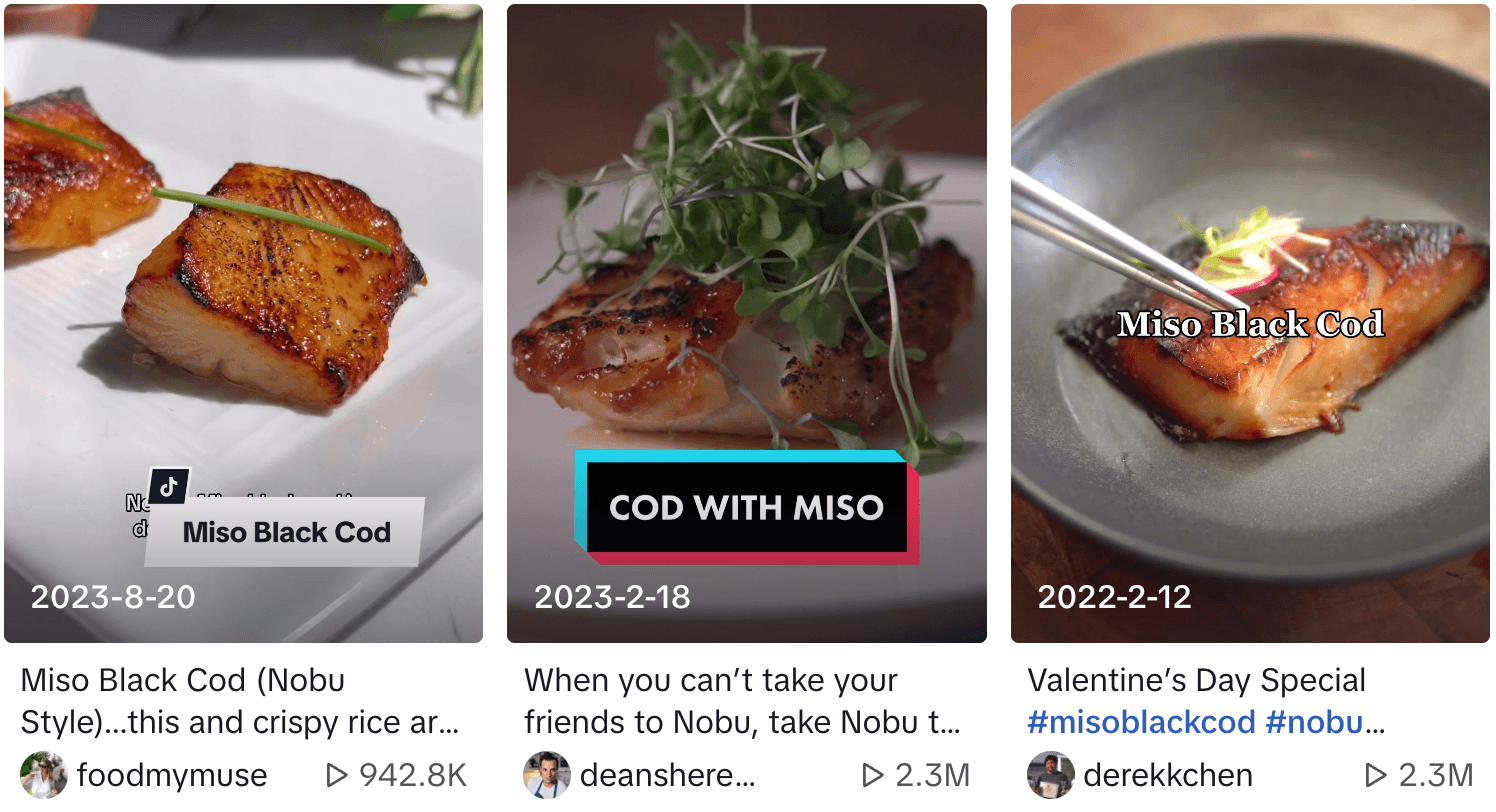The hidden techniques behind Nobu’s signature (but misnomer) dish.
Celebrities’ favorite Hollywood restaurant Nobu has always been a trendsetter. It brought Japanese cuisine and sushi dishes to popularity in the 90s LA food scene. More recently, its signature dish — the black miso cod — seems to be replicated on every menu, recipe blog, and social media platform alike.
The dish looks super simple, so why do people freak out about the flavor?
1) Miso isn’t actually the key ingredient. The dish uses a Japanese marinating technique known as kasuzuke, a paste made of sake (and/or mirin) sake leaves, sugar, and salt — which cures the fish.
- Many dupe recipes don’t do their research and miss this step, thinking you can brush a filet with miso, only to fall short of the original version.
- Without the full marinating and dry-brining process, the proteins don’t get a chance to denature, meaning you won’t end up with a tender and succulent fish.
2) The ingredients layer umami, acidity, and sweetness which amplify the flavor of the fish.
- The kasuzuke ingredients are umami-rich, which compound with the glutamate-rich miso paste. When you broil and caramelize these ingredients on the surface of the fish, the browning reactions double down on the savoriness.
- The sake and mirin in the marinade also provide acidity and sweetness, which balance the savory elements. When broiled, the light bitterness from the charred spots creates even more complexity on the palette.
3) Black cod’s flakey but sturdy texture holds onto the marinade but won’t go mushy like other fish.
- The famous dish uses black cod, otherwise known as sablefish which has an incredibly buttery mouthfeel, especially when marinated. It’s a completely different species from the prevalent white cod found at the supermarket and in fish & chips.
If you can’t find black cod at home, lots of people try the technique with salmon, which has a similar texture but a stronger competing flavor.
Our recommendation: instead of following a dupe recipe that shortcuts the original technique, you can follow Chef Nobu Matsuhisa’s actual recipe in his eponymous cookbook.


